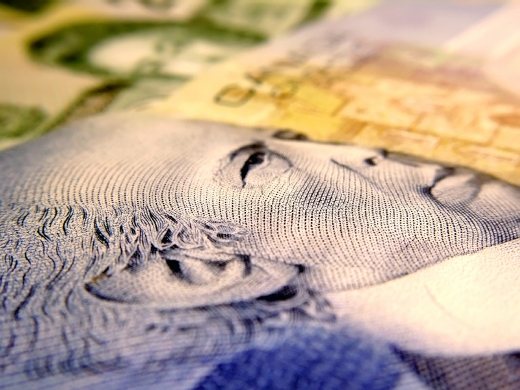Plenty of other factors and sectors are there to prop up Canada’s currency

As global supply and demand factors push oil’s per-barrel price down below $45, some have raised concerns that the loonie may also depreciate. But one economist sees several reasons to not be too concerned.
“First, the current price of oil is still consistent with a Canadian dollar trading close to 77 cents US,” said David Rosenberg, chief economist and strategist at Gluskin Sheff + Associates, in a piece contributed to the Financial Post.
He went on to point out that the net number of speculative short positions — recently, it was at 88,510 contracts — had barely closed, so “there is still plenty of squeezing left.”
Rosenberg also noted the Bank of Canada’s intent to raise rates due to real GDP growth reportedly accelerating at a 3.8% annual rate over the past six months. Excluding a 12% surge in the housing and auto sectors, the rest of the Canadian economy still grew at a decent 3.2% annual rate.
The growth also came despite a 3.1% fall in oil and gas activity, as well as a slump of 4.6% in commercial construction.
Several spaces in Canada’s manufacturing sector have expanded. Food manufacturing has gone up by 5.7% year-over-year, and industrial machinery has risen by 7.5%. Other areas have surged even more: beverage production (11.5%), apparel output (12.1%), fabricated metal production (14.7%), and machinery manufacturing (15%) have all boosted the economy. The high-tech sector has also contributed, growing at an annualized rate of 8.3% in the past six months.
Services sectors have also been expanding. Farm product wholesaling gained 26%. Retail activity numbers showed gains in furniture and home furnishings (15.4%); electronics and appliances (19.5%); as well as drug stores, clothing outlets, and grocery outlets (5% to 6%).
Transportation services grew off of expansion in air transport services (4.2%), railways (6.6%), and trucking services (5.4%). Technology services, specifically computer systems design, have gone up 9.7% annually.
Rosenberg also cited expansions in the motion-picture industry (9.5%); the financial sector (almost 6%); and management, scientific, and tech consulting (more than 4%).
“And through all this, with very little help from the government sector, whose growth is being constrained at just 1%,” he said.
For more of Wealth Professional's latest industry news, click here.
Related stories:
Could oil-price pain lead to rate-hike hesitation?
Exits from largest oil-sector association expose rifts
“First, the current price of oil is still consistent with a Canadian dollar trading close to 77 cents US,” said David Rosenberg, chief economist and strategist at Gluskin Sheff + Associates, in a piece contributed to the Financial Post.
He went on to point out that the net number of speculative short positions — recently, it was at 88,510 contracts — had barely closed, so “there is still plenty of squeezing left.”
Rosenberg also noted the Bank of Canada’s intent to raise rates due to real GDP growth reportedly accelerating at a 3.8% annual rate over the past six months. Excluding a 12% surge in the housing and auto sectors, the rest of the Canadian economy still grew at a decent 3.2% annual rate.
The growth also came despite a 3.1% fall in oil and gas activity, as well as a slump of 4.6% in commercial construction.
Several spaces in Canada’s manufacturing sector have expanded. Food manufacturing has gone up by 5.7% year-over-year, and industrial machinery has risen by 7.5%. Other areas have surged even more: beverage production (11.5%), apparel output (12.1%), fabricated metal production (14.7%), and machinery manufacturing (15%) have all boosted the economy. The high-tech sector has also contributed, growing at an annualized rate of 8.3% in the past six months.
Services sectors have also been expanding. Farm product wholesaling gained 26%. Retail activity numbers showed gains in furniture and home furnishings (15.4%); electronics and appliances (19.5%); as well as drug stores, clothing outlets, and grocery outlets (5% to 6%).
Transportation services grew off of expansion in air transport services (4.2%), railways (6.6%), and trucking services (5.4%). Technology services, specifically computer systems design, have gone up 9.7% annually.
Rosenberg also cited expansions in the motion-picture industry (9.5%); the financial sector (almost 6%); and management, scientific, and tech consulting (more than 4%).
“And through all this, with very little help from the government sector, whose growth is being constrained at just 1%,” he said.
For more of Wealth Professional's latest industry news, click here.
Related stories:
Could oil-price pain lead to rate-hike hesitation?
Exits from largest oil-sector association expose rifts



